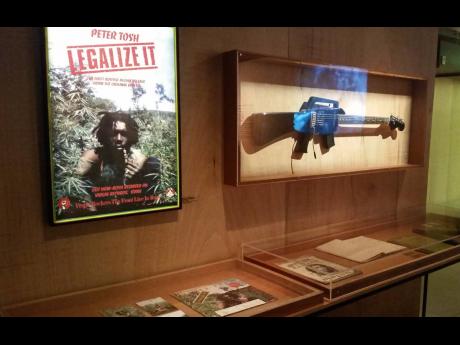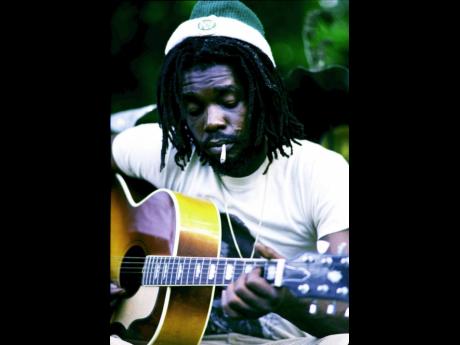Tosh’s M16 guitar and I...
As we get ready to celebrate Peter Tosh’s 75th birthday with a tribute concert being staged by the Peter Tosh Museum on October 19, Romae Gordon reflects on her experience with his famed M16 guitar in São Paulo, Brazil.
The bright full moon lit up the São Paulo night as I left the South America city. A fitting departure as my heart brimmed with pride and my hands felt the pleasure of carrying the sacred object with which I was entrusted. It was a remarkably luminous exit from one of, if not, the most important cities of business and industry in Brazil.
But as powerful as São Paulois economically and politically, it is also rich in culture and the arts. São Paulo is home to several of Brazil’s foremost literary artists, writers, and musicians. And, although I thought football would have brought me to Brazil, it was music that did it. Jamaican music. Peter Tosh’s music.
The euphoria and fanfare of the Peter Tosh exposition at the Jamaica Jamaica! exhibition aside, what struck me most about the experience was the exceptional attention to detail that went into mounting such a work. The whole, the before, the beginning, the duration, the end, and the after, were all very impressive. The extraordinarily careful manner in which the artefacts were handled prior to, and at the end of the showing, left a huge impact on me.
The experience made me recall one of my undergrad classes where my Haitian professor insisted that objects have souls. I saw first-hand how people respect and treat items of history and substance with exquisite attention. Peter Tosh’s M16 guitar and what it represents to different people may be controversial, but its handlers managed it as if it had the most important soul ever.
For the first time, I could relate to the passion and intensity my professor of religion brought to his teachings on objects and symbolism.
It was simply brilliant to see Jamaica’s music culture represented in this way. The well-researched, powerful narratives beautifully complemented the visually stunning arrangement of the exhibition.
Naturally, too, the music was intoxicating. Love, passion and time were obviously poured into creating the soundtrack of the exposition.
But on reflection, I recognised that I had never witnessed our Jamaican culture in this way. Having lived in various European cities, it was commonplace for me to see works mounted of many artists and cultures far removed from my own reality but, nonetheless, relevant because of the intrinsic value they have brought to the world of art and culture.
Cultural preservation
As I get more of an insider’s view into the world of museology, thanks to Peter Tosh, I realise how much more critical it is to ensure that we write our cultural stories for preservation and for giving a proper legacy to the generations who will follow. As forebears of slaves, I believe we suffer a great deal of ancestral and cultural disconnection.
And it appears as if we have simply accepted this or have not given it enough purchase to reclaim our heritage and promote our creations. Our artists and writers, poets and musicians must get their due, too. They must be celebrated and their works mounted to be shared and experienced – for us, not just for others, to enjoy.
We have to begin the process of creating such spaces and bringing our young so they can see what was created before them and know that they, too, have people to look to who are of their own origins so they can continue our rich history and traditions and naturally create their own interpretation for their time.



